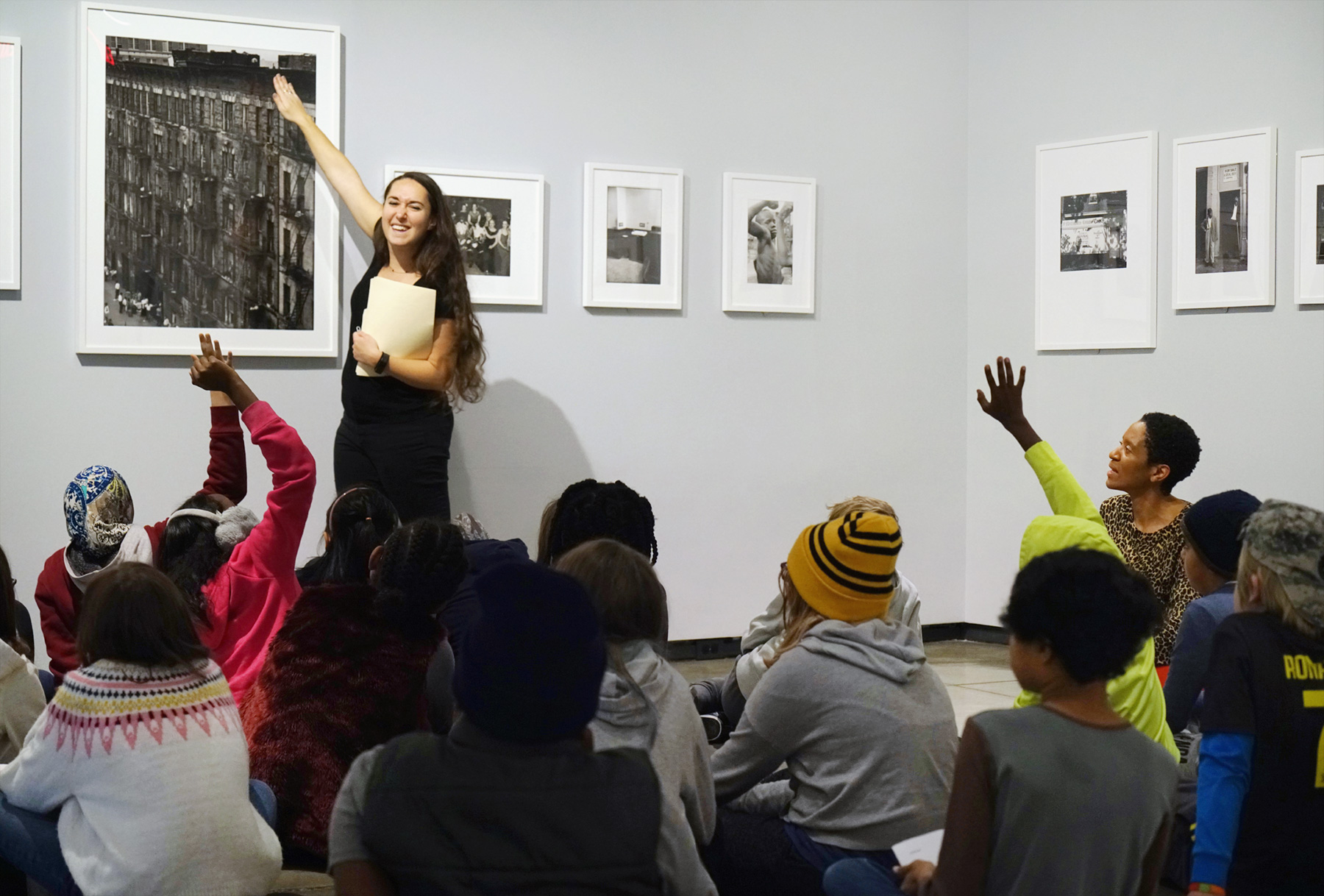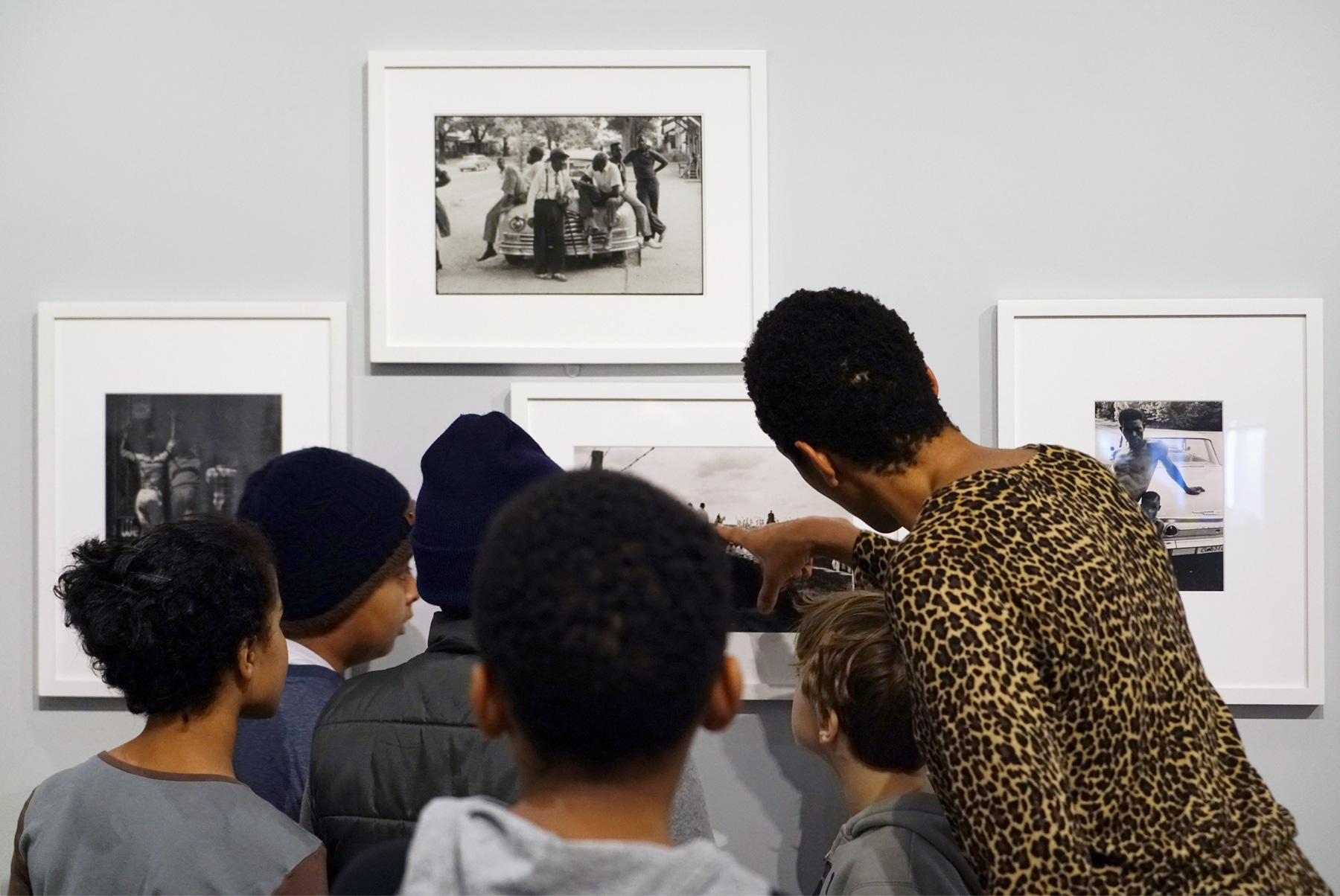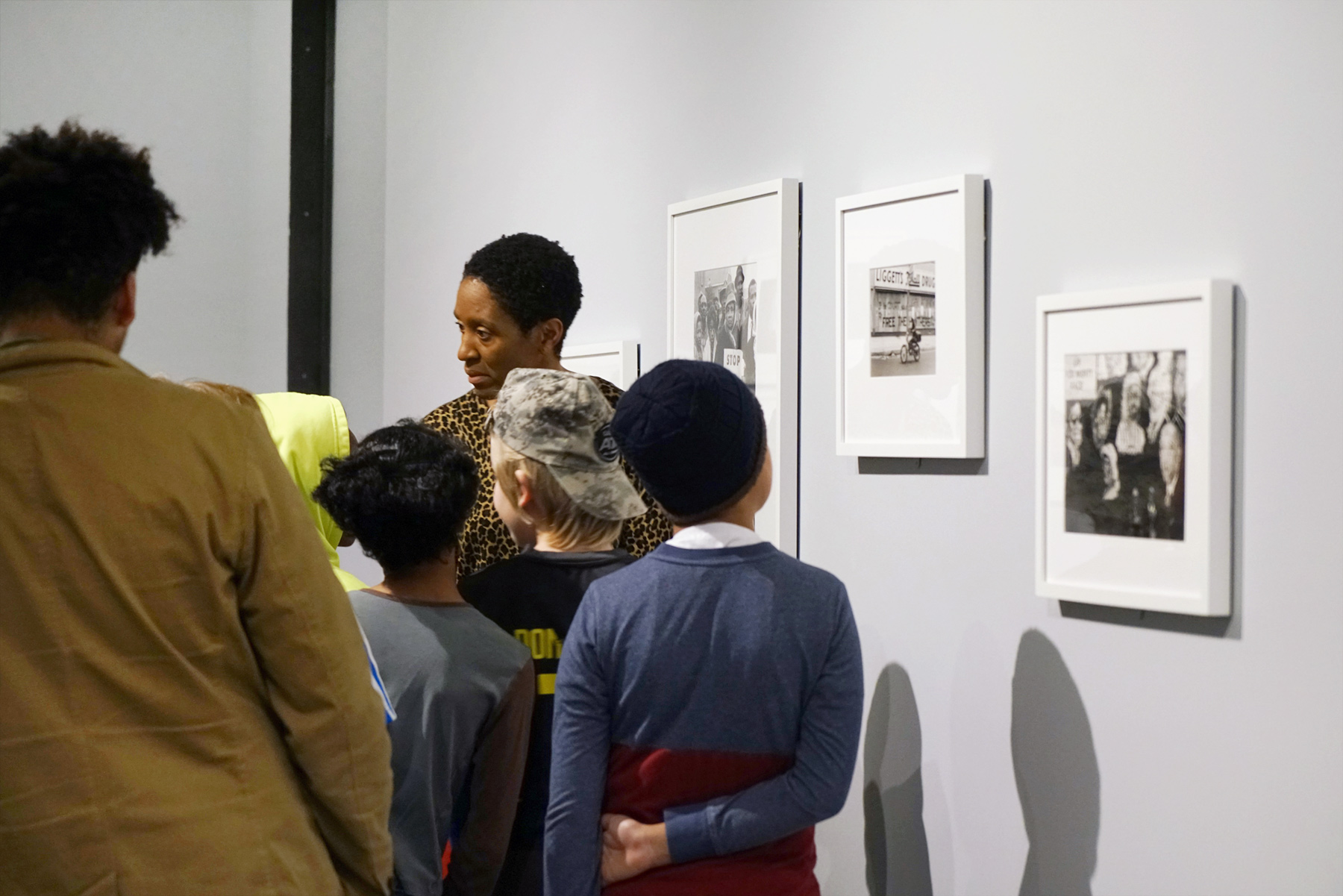Makeda Best, the Richard L. Menschel Curator of Photography at the Harvard Art Museums, came to me with a big idea and a community contact.
It was October 2018 and Makeda’s exhibition Time is Now: Photography and Social Change in James Baldwin’s America was on view next door to the museums at the Carpenter Center for the Visual Arts. Makeda had wanted to offer an elementary school program for some time and had recently been in touch with Rose Levine, a fifth-grade teacher at Graham and Parks School, in Cambridge. In the spirit of the exhibition title, the time to welcome young visitors to the gallery was now.
I have a background in school-age museum education and am committed to making art accessible for young audiences. I had just started my position as the Inga Maren Otto Curatorial Fellow in the Division of Academic and Public Programs at the museums when Makeda approached me about creating a program for the Graham and Parks students. I jumped at the chance to help realize her vision of mobilizing Time is Now as a pedagogical tool.
The best educational programs start with learning goals and are structured purposefully to achieve them.
Our goals were broad: to inspire young people within the museum space; to give students the tools to think deeply about what they see in art; and to understand what is unique about photography as an artistic medium. Using Makeda’s exhibition as a springboard, we developed a lesson plan on the theme of people and places—specifically, the stories that artists, curators, and viewers tell about them using photographs.
Makeda and I selected works in Time is Now that we felt best spoke to this theme and developed goal-driven exercises for each. We reviewed our plans with Rose to ensure that they were suitable for the students. The biggest challenge was that we’d be working with three different classes, including a Sheltered English Immersion group, and each group had its own unique dynamic and pedagogical style.
In order to better tailor our teaching to each class, we conducted “pre-visits” at Graham and Parks. The concept of a pre-visit is something I learned from my training as a K–12 museum educator at the RISD Museum: by visiting students ahead of time in their usual learning environment, museum staff can get a feel for their classroom culture and build rapport with them. Beyond this, pre-visits offer the chance to introduce museum rules and expectations, familiarize students with the people and spaces they will encounter in the museum, and most importantly, get everyone excited about their upcoming trip. These sessions turned out to be as much a learning experience for us as they were for the students; Makeda and I got a feel for what each group was studying, what they were curious about, and how their interests could relate to the exhibition.
During the pre-visits, we modeled the same type of close-looking exercises that we had planned for the gallery, using projected images of photographs from Time is Now. We talked about James Baldwin’s life and Makeda’s inspiration for the exhibition. We also introduced some vocabulary related to museums that would be useful during the program. Students were especially excited to learn what a curator does; Makeda graciously answered their questions about everything from her career path to her personal relationships with some of the photographers featured in the exhibition. Each classroom discussion was different; as we listened to the students, we thought about how to transform their observations into guiding principles for the gallery visits.





